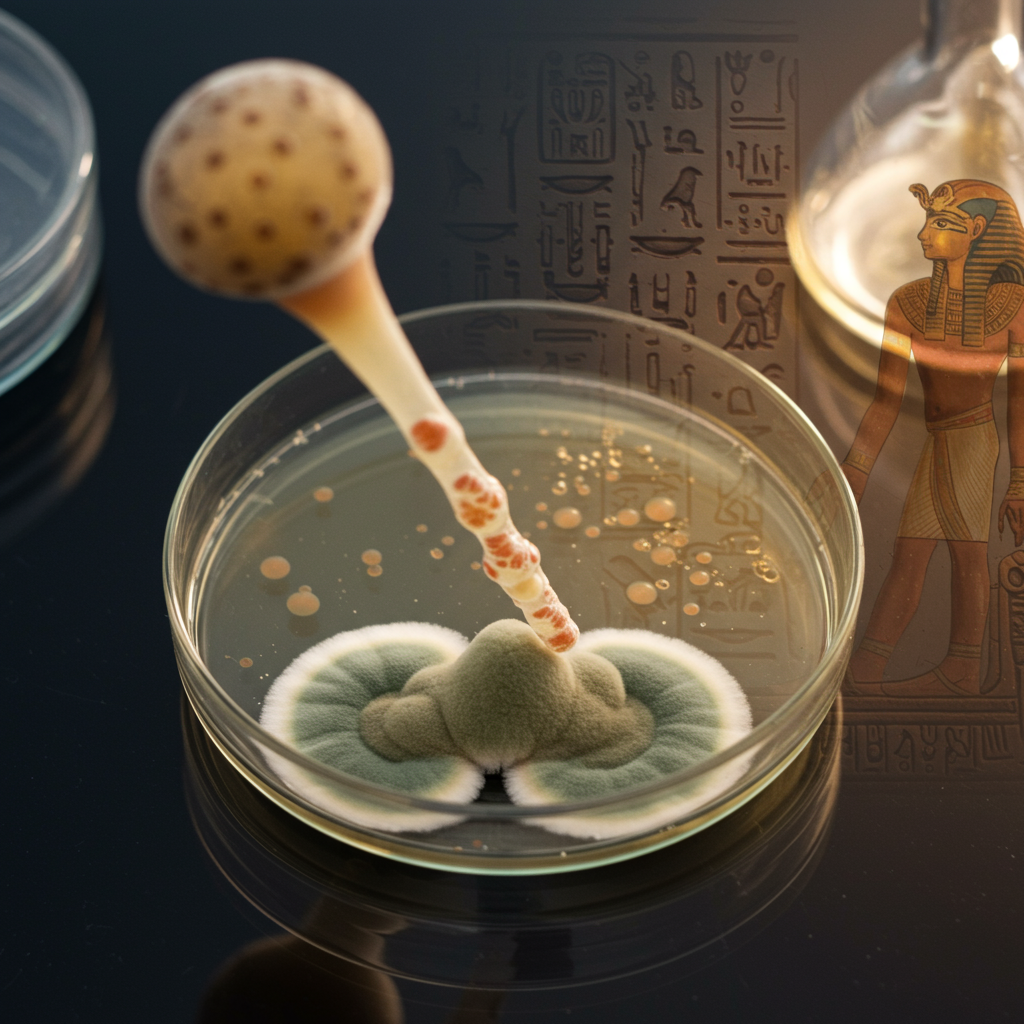For decades, the mold Aspergillus flavus has been known primarily as a microbial villain. Common in soil and agriculture, it produces dangerous toxins and has been linked to severe lung infections, particularly in vulnerable individuals. Adding to its notoriety, theories suggest its dormant spores contributed to mysterious deaths following the excavation of ancient tombs, earning it the moniker “pharaoh’s curse.”
However, scientists are now looking at this historically feared fungus in a new light. Researchers at the University of Pennsylvania School of Engineering and Applied Science have successfully transformed compounds derived from Aspergillus flavus into potent molecules showing remarkable promise in fighting cancer, specifically leukemia.
This groundbreaking work, detailed in the journal Nature Chemical Biology, represents an exciting step towards discovering novel medicines sourced from the natural world. As study co-author and UPenn engineer Sherry Gao noted, “Fungi gave us penicillin… These results show that many more medicines derived from natural products remain to be found.”
The Fungus Behind the ‘Curse’
Aspergillus flavus is a ubiquitous mold, easily identified by its yellow spores. Its ability to infect important crops and produce toxins has made it a significant concern in both agriculture and medicine for over a century.
The dramatic stories connecting the fungus to ancient tombs add a layer of historical intrigue. Following the 1920s excavation of King Tutankhamun’s tomb in Egypt, and again after scientists entered Poland’s Casimir IV’s tomb in the 1970s, several individuals involved reportedly died unexpectedly. While sensationalized as a “curse,” medical experts later theorized that inhaling ancient, dormant fungal spores, including A. flavus, thriving on materials like cereals sealed within the tombs, could have caused severe respiratory illness or allergic reactions in those with weakened immune systems.
Turning a Toxic Foe into a Potential Ally
Despite its dangerous past, the UPenn team hypothesized that A. flavus might also harbor beneficial compounds, much like other fungi have yielded life-saving drugs. They focused on finding a specific class of molecules known as ribosomally synthesized and post-translationally modified peptides, or RiPPs.
While thousands of RiPPs have been identified in bacteria, they are much less common in fungi, partly due to previous misidentification and a limited understanding of how fungi create these complex molecules. However, RiPPs are known for their significant bioactivity.
To uncover these elusive fungal RiPPs, the researchers employed a novel approach, scanning a dozen different Aspergillus strains and integrating both metabolic profiling and genetic analysis. This powerful method allowed them to pinpoint A. flavus as a promising source and identify specific genes and proteins responsible for producing the desired compounds. Confirming their findings, they showed that disabling these genes eliminated the chemical markers for the RiPPs.
Introducing Asperigimycins: A New Class of Compounds
Using their innovative technique, the team successfully purified four distinct RiPPs from A. flavus. These previously undescribed molecules share a unique structural feature: interlocking rings. The researchers named them asperigimycins, after the fungus from which they were discovered.
When tested in vitro against human cancer cells, the asperigimycins showed remarkable therapeutic potential. Even without modification, two of the four variants demonstrated potent effects against leukemia cells.
Further enhancing their potency, the researchers discovered that adding a lipid (a fatty molecule similar to one found in royal jelly) to one of the asperigimycin variants significantly boosted its effectiveness. This lipid-modified compound performed comparably to cytarabine and daunorubicin, two FDA-approved drugs that have been standard leukemia treatments for decades.
Unlocking the Mechanism: Gateway and Microtubules
The researchers delved deeper to understand how asperigimycins, particularly the lipid-enhanced variant, attack cancer cells. They identified a specific gene in leukemia cells, SLC46A3, as crucial for allowing sufficient quantities of the asperigimycins to enter. This gene appears to act as a “gateway,” helping materials exit lysosomes – tiny sacs within cells that collect foreign substances.
This finding is highly significant because SLC46A3 may also facilitate the entry of other “cyclic peptides” with medicinal properties, a class of drugs that often requires modification for effective cellular uptake. Understanding how lipids influence this gateway gene provides a new tool for drug development involving such compounds.
Additionally, experiments revealed that asperigimycins likely disrupt the process of cell division. Cancer cells are characterized by uncontrolled division, and these compounds appear to block the formation of microtubules, essential structures required for cells to divide.
Crucially, the compounds demonstrated high specificity. They showed little to no effect on breast, liver, or lung cancer cells tested, or on a range of bacteria and fungi. This targeted action is a critical feature for developing potential future medications, minimizing harm to healthy cells.
Nature’s Untapped Pharmacy
Beyond the immediate discovery of asperigimycins, the UPenn team found similar gene clusters in other fungi, suggesting that Aspergillus flavus is not an isolated case. This indicates that many more fungal RiPPs with potent bioactivity could be waiting to be discovered in the vast, largely unexplored fungal kingdom.
As Qiuyue Nie, a study co-author and doctoral fellow, stated, “This is an unexplored region with tremendous potential.”
While these findings are highly promising, asperigimycins are still in the early stages of development. The next steps involve testing the compounds in animal models before potentially progressing to regulated human clinical trials.
The transformation of a fungus historically feared for its deadly toxins into a potential source for a new leukemia drug highlights the incredible potential hidden within nature. As engineers and scientists continue to explore nature’s “pharmacy,” they uncover secrets that could lead to life-saving breakthroughs.

